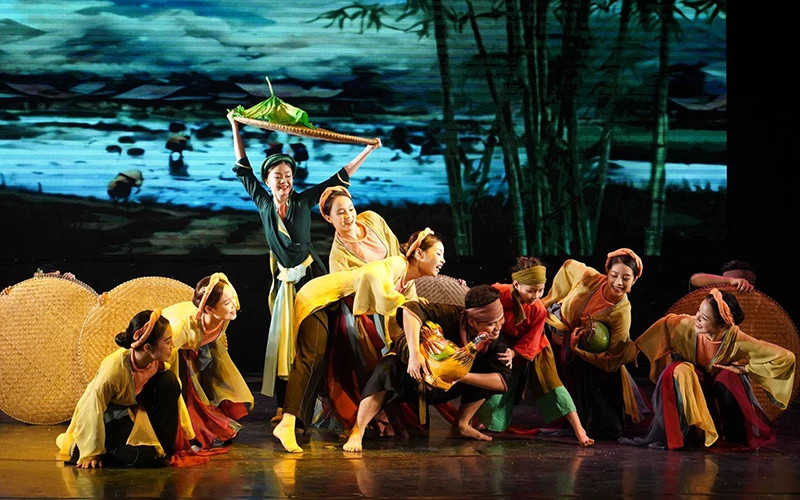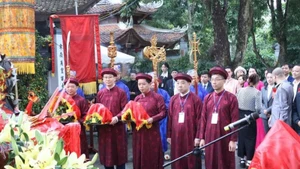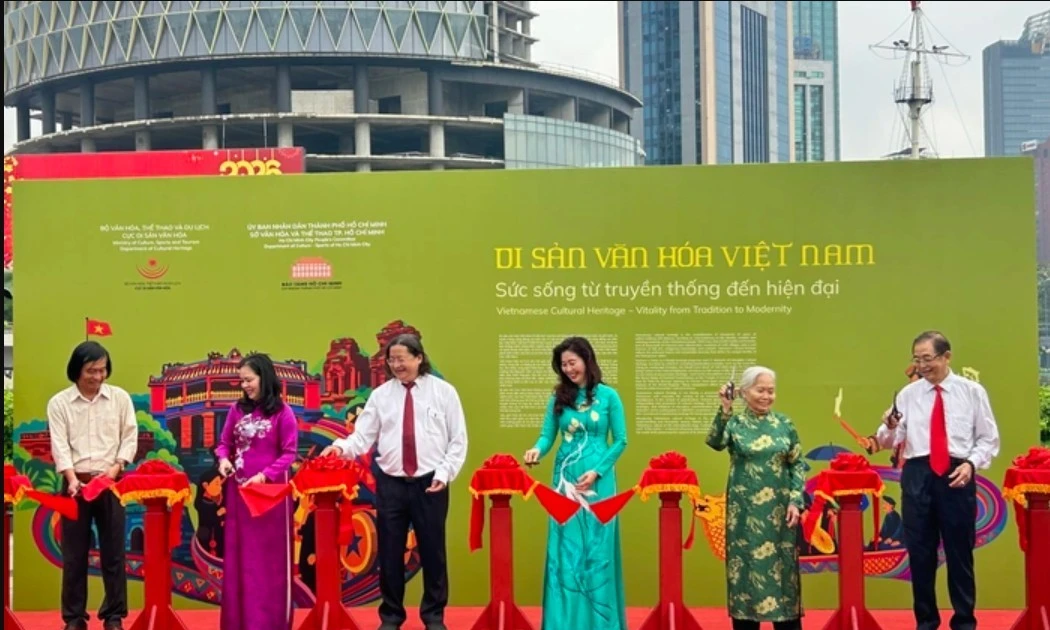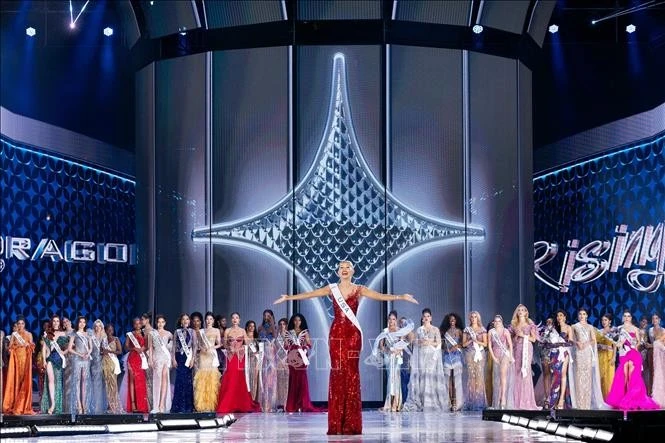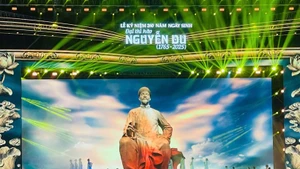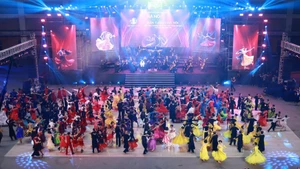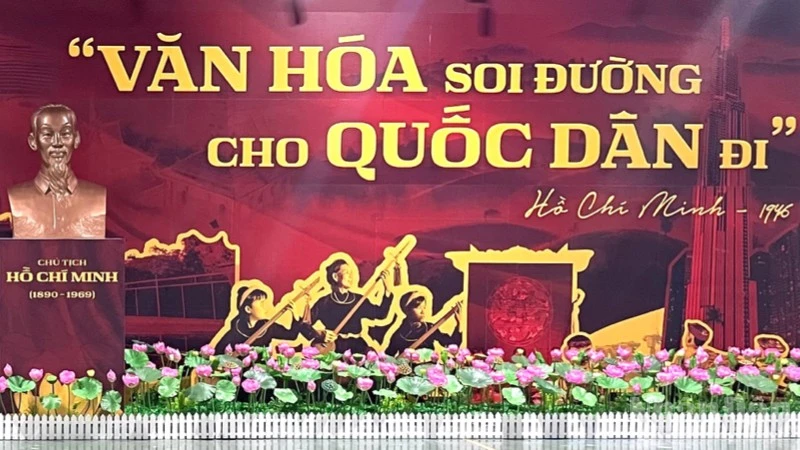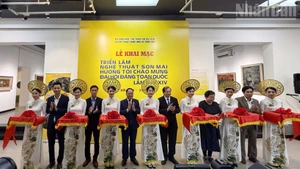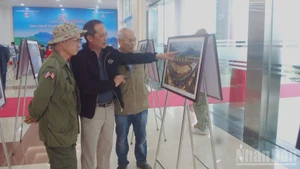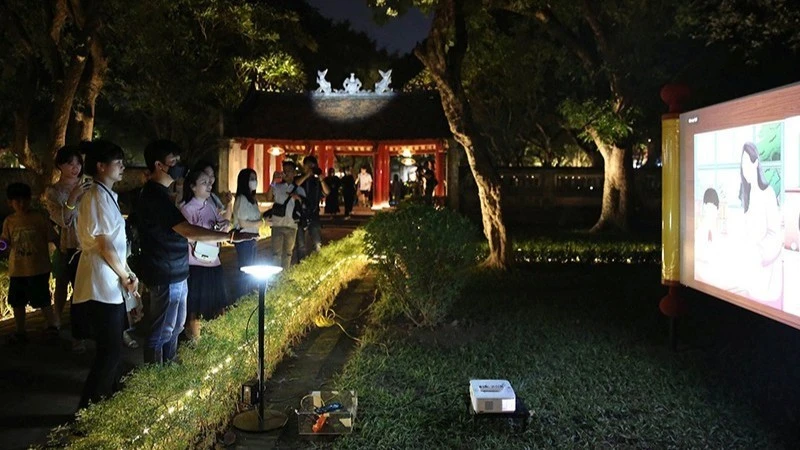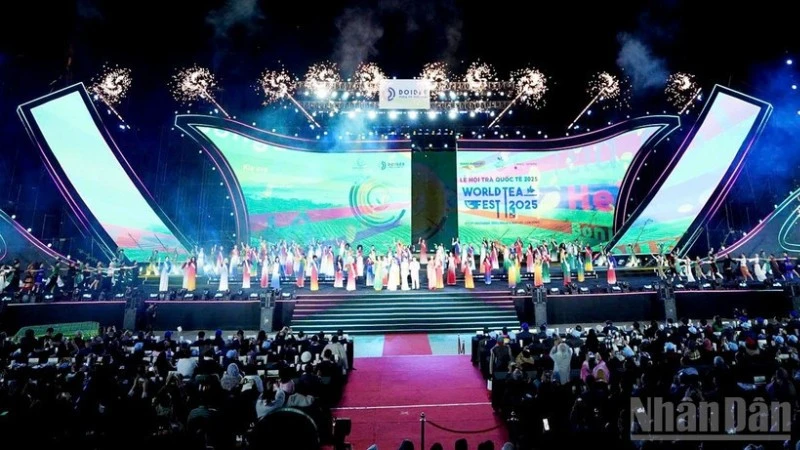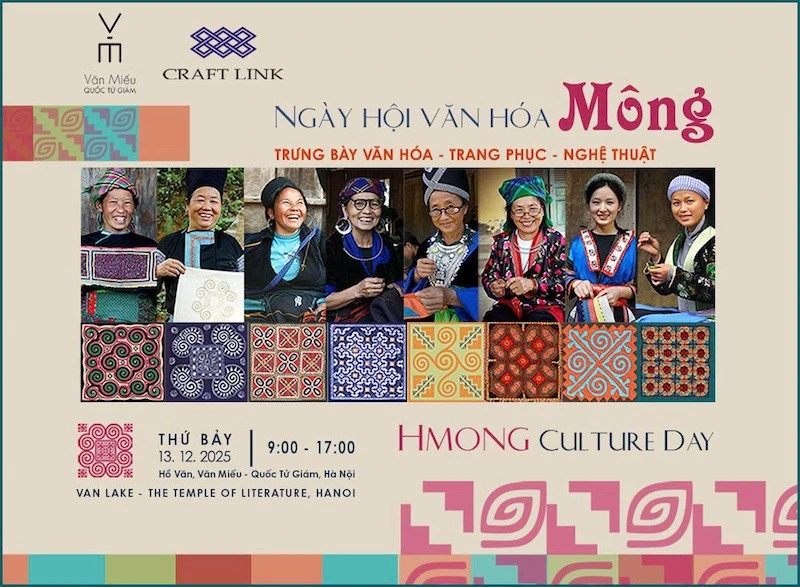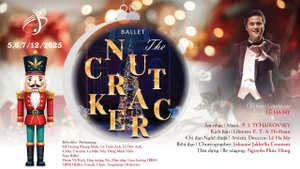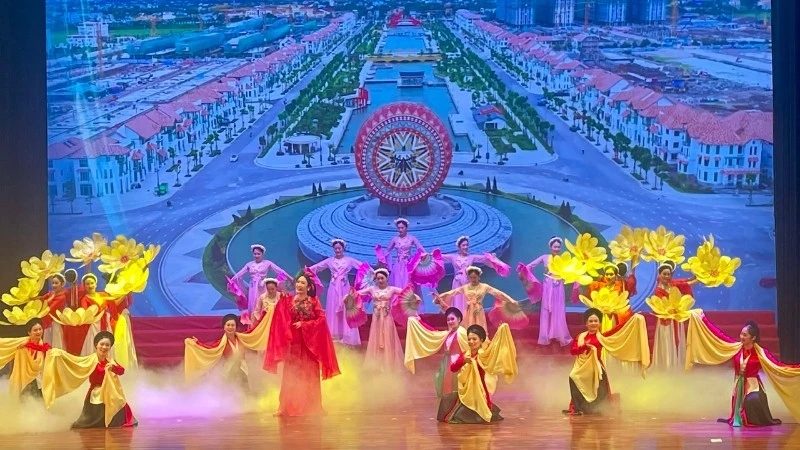However, integration must not lead to dilution; this issue is urgent, and the "key" to unraveling it lies in reconnecting with the cultural elements and traditional identities of the ancestors. This is why many contemporary dance works in Vietnam are choosing a path that integrates traditional characteristics with modernity.
At the recent 2024 International Dance Festival held in Hue, audiences were captivated by "Nang May" (Lady Bamboo) from the Vietnam Dance Academy, one of five works awarded the Gold Medal. This poetic dance performance serves as a lyrical tribute to Vietnam's traditional craft of bamboo and rattan weaving. The directors masterfully highlighted the flexibility of rattan fibers, creating both familiar and innovative lines and shapes that seamlessly merged with subtle body movements. This combination vividly narrates the cultural story of Vietnamese people, set to folk-inspired music.
Another Gold Medal winner at the festival, "Hoa tinh nhan gian" (Painting Love) by the Military University of Culture and Arts, made an equally impressive impact, from its storyline to music, costumes, props, and visual presentation, which all richly evokes the cultural essence of northern countryside, with the traditional Dong Ho folk paintings. Recently, the dance piece "SESAN", which was scripted and directed by choreographer Tuyet Minh, premiered at Kon Klor Communal House in Kon Tum City, opening the 2024 Vietnam Dance Week. It offered both domestic and international dance enthusiasts a powerful artistic experience by delving into the vibrant culture of the Central Highlands.
In recent years, a series of contemporary dance works have successfully integrated ethnic cultural elements. The fusion of new and traditional elements not only brings captivating and artistically valuable dance pieces but also helps shape a creative trend rooted in a blend of ethnic and modern influences.
According to Dr. People's Artist Nguyen Van Quang, former Director of the Vietnam Dance Academy, the country’s dance industry has cultivated a young generation of choreographers with sharp minds and the ability to engage with new trends. They know how to incorporate traditional dance elements into movements that align with contemporary styles, creating works that reflect modern life yet retain the essence and unique style of Vietnam, bringing an engaging experience to the audience.
However, achieving this balance is challenging. In reality, many dance works have felt awkward when blending traditional and modern dance languages without the necessary refinement or “sweetness”. Some pieces even misrepresent cultural elements, resulting in an off-putting and unacceptable effect.
Dr. People's Artist Pham Anh Phuong, Chairman of the Vietnam Dance Artists’ Association, expressed his belief that the success of a dance play largely depends on the “craftsmanship” of the choreographer. To steer the dace in the right direction and gain public acceptance, a choreographer must be dedicated and passionate, and invest intellectual energy in the creative process. They need a deep understanding of both traditional and contemporary values, with insightful perspectives on cultural heritage to creatively handle dance language through a modern aesthetic lens. Experts suggested that the trend of embracing ethnic elements in contemporary dance creation can manifest in various ways, such as merging traditional dance styles with modern dance techniques, conveying themes and stories about national culture and history, and using traditional music and costumes.
Regardless of the chosen method, creators must thoroughly explore and research each culture’s unique features, carefully selecting and refining them and infusing their personal creative touch through a contemporary lens to ensure authenticity and vitality in a dance work.
From his perspective as a practitioner, researcher, and educator, Master Ha Thai Son, a lecturer from the Choreography and Dance Training Department under the Vietnam Dance Academy, asserted that to apply contemporary dance in creation while preserving traditional elements, comprehensive solutions from multiple angles are needed. Alongside the artists' creative efforts, cultural management agencies should implement specific policies for preserving, developing, and promoting traditional dance. In addition, it is also crucial to encourage competitions, art festivals, and creative projects that blend folk and ethnic dance with modern technology; strengthen collaborations with international organisations and art schools; and create opportunities for Vietnamese artists to engage in global exchange.
Training institutions also need to improve teaching programmes to help students not only master contemporary and traditional dance techniques but also understand national culture. They should foster environments where students can practice creating and performing in projects that combine contemporary and traditional dance.
Indeed, the return to national elements in contemporary dance is a natural trend. It is not only a “territory” that inspires creativity but also reflects the responsibility of Vietnam’s current dance artists in preserving and promoting traditional cultural values.
